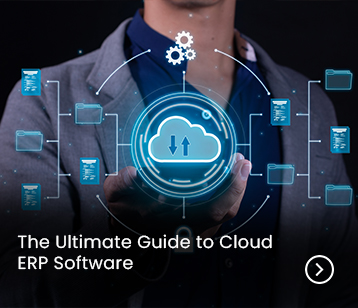Businesses all around the globe are mounting their confidence on ERP systems as a cost competent alternative to their software applications. Companies have invested a large amount of money and a lot of time in implementing ERP just to smoothen the business processes and keep their organization running.
ERP has brought remarkable benefits to businesses of all types and sizes. It has improved productivity, reduced wastage, improved information flow, and increased profits. It renders the businessmen with the excellent opportunity of taking the on time decisions leading to the success of their business.
When everything goes smoothly with enterprise resource planning, the revenues generated typically increases with time. The return on investment exceeds the limits never seen before. Then why the case is not same for many organizations. Why does enterprise resource planning, or ERP, work so well for some companies but not for others?
The ERP can prove a huge success for all companies by taking the following factors into consideration:
Drilling knowledge to employees
Unlike incorrect product architecture that can bump off an ERP –- A lack of product knowledge can be more dangerous; it can even lead to the failure of the best product architecture.
Knowledge transfer is the purposeful process of translating conceptual knowledge into broadly applied procedural knowledge. It is fundamental to ERP integration and is vital to ERP success. Organizations should set up a complete business process outline and understand their dependencies before selecting an ERP. Training methodology should not only include operating an ERP but should also impart knowledge of relating their practical jobs to the system.
Indulging to new
ERP is not merely software designed to encapsulate the data and functional processes in an organization. But the aim is to eradicate the cumbersome technology that is instead of generating revenues, is itself consuming revenues.
Before implementing an ERP, businessmen should analyze their organizational structure carefully. Otherwise, they may pick the technology that isn’t appropriate to their needs and prove just wastage of time and money.
The attempt to revamp business processes is normally the most expensive part of an ERP project. Therefore, some companies afraid to abandon old ways of working that have served them in the past. Others stumble later on by taking up technology that simply echoes older systems already in use.
Our scan advises that the best way to attain stupendous performance with ERP is to loop new ways of working with new technology.
Expenditure assessment
ERP is a pricey but valuable mission. The satire of implementing ERP is — it forces the businessmen to pay out more when one desires to splurge less. The cost of ERP is not only the cost of the software. It includes a variety of factors – training, implementation, hardware configuration, to name a few.
At all times, it is better to plan your budget on the higher side than what you have considered.
Keep the best, Discard the worst
Companies should not completely change and implement a new ERP but should develop a practice of keeping the best of old and discarding the worst of new. They should embrace only new things that will help move their business forward.
Sketch Enterprise Metrics
Apart from knowledge transfer, companies must create lucid performance metrics to judge if the project is meeting desired expectations or not.
Patience – The key to success
ERP implementation is not a target, but an expedition towards unremitting step up. To pull off positive ROI, organizations must budget toward the ERP implementation. This pledges manageability of organizational alterations, and also poses organizations to knob any challenges that may arise out of preceding implementation.



















